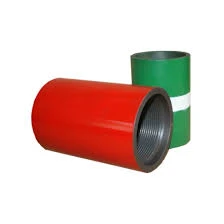- Afrikaans
- Albanian
- Amharic
- Arabic
- Armenian
- Azerbaijani
- Basque
- Belarusian
- Bengali
- Bosnian
- Bulgarian
- Catalan
- Cebuano
- Corsican
- Croatian
- Czech
- Danish
- Dutch
- English
- Esperanto
- Estonian
- Finnish
- French
- Frisian
- Galician
- Georgian
- German
- Greek
- Gujarati
- Haitian Creole
- hausa
- hawaiian
- Hebrew
- Hindi
- Miao
- Hungarian
- Icelandic
- igbo
- Indonesian
- irish
- Italian
- Japanese
- Javanese
- Kannada
- kazakh
- Khmer
- Rwandese
- Korean
- Kurdish
- Kyrgyz
- Lao
- Latin
- Latvian
- Lithuanian
- Luxembourgish
- Macedonian
- Malgashi
- Malay
- Malayalam
- Maltese
- Maori
- Marathi
- Mongolian
- Myanmar
- Nepali
- Norwegian
- Norwegian
- Occitan
- Pashto
- Persian
- Polish
- Portuguese
- Punjabi
- Romanian
- Russian
- Samoan
- Scottish Gaelic
- Serbian
- Sesotho
- Shona
- Sindhi
- Sinhala
- Slovak
- Slovenian
- Somali
- Spanish
- Sundanese
- Swahili
- Swedish
- Tagalog
- Tajik
- Tamil
- Tatar
- Telugu
- Thai
- Turkish
- Turkmen
- Ukrainian
- Urdu
- Uighur
- Uzbek
- Vietnamese
- Welsh
- Bantu
- Yiddish
- Yoruba
- Zulu
Bull Plug Wellhead Solutions for Reliable Oil & Gas Operations
Understanding Bull Plug Wellheads An Essential Component in Oil and Gas Operations
A bull plug wellhead is an integral component in the oil and gas industry, particularly in the context of drilling operations and well management. Essentially, a wellhead serves as a pressure control barrier between the wellbore and the surface, ensuring safe and efficient extraction of hydrocarbons from underground reservoirs. The bull plug is a specific type of device used in wellheads to seal off abandoned wells or to provide pressure containment during various phases of production.
The bull plug typically consists of a robust plug, often made from high-strength materials capable of withstanding extreme pressures and temperatures encountered in subsurface environments. Its design is critical, as it must create a hermetic seal that prevents the escape of fluids and gases, mitigating risks of environmental contamination or blowouts. These risks are significant in the oil and gas sector, where unmonitored pressure can lead to catastrophic failures.
One of the primary functions of the bull plug wellhead is during the completion and abandonment phases of a well
. After the extraction process has concluded, the well must be properly sealed to prevent any fluid migration that could harm the environment or compromise the integrity of surrounding sites. The bull plug, when installed correctly, acts as a cap at the wellhead, effectively isolating the well from external surroundings and halting any further communication with the reservoir.bull plug wellhead

Moreover, bull plug wellheads are designed to facilitate maintenance and monitoring. Many modern bull plugs include features that allow operators to conduct pressure tests and inspect the integrity of the seal without requiring full removal of the plug. This functionality is crucial for ongoing assessments of abandoned wells and ensures compliance with environmental regulations and safety standards.
Additionally, the choice of wellhead equipment, including bull plugs, is influenced by multiple factors, including the depth of the well, the pressure and temperature conditions, and the type of hydrocarbons being extracted. Operators must carefully consider these variables to select the appropriate materials and designs that will ensure lasting performance.
In conclusion, bull plug wellheads are a fundamental aspect of well integrity management in the oil and gas industry. They not only provide necessary pressure containment but also play a vital role in safeguarding environmental health and promoting sustainable practices. As energy demands continue to rise, the importance of reliable and efficient wellhead solutions like the bull plug cannot be overstated. Proper implementation of these technologies is crucial for the ongoing success and safety of oil and gas operations worldwide.
-
Tubing Pup Joints: Essential Components for Oil and Gas OperationsNewsJul.10,2025
-
Pup Joints: Essential Components for Reliable Drilling OperationsNewsJul.10,2025
-
Pipe Couplings: Connecting Your World EfficientlyNewsJul.10,2025
-
Mastering Oilfield Operations with Quality Tubing and CasingNewsJul.10,2025
-
High-Quality Casing Couplings for Every NeedNewsJul.10,2025
-
Boost Your Drilling Efficiency with Premium Crossover Tools & Seating NipplesNewsJul.10,2025







